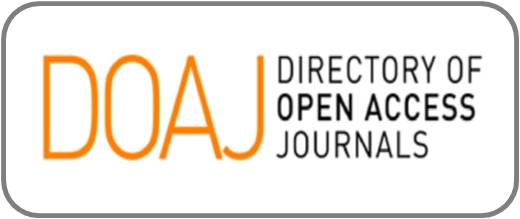How to Handle a Case of Redundant Publications in Four Elsevier Journals?
DOI:
https://doi.org/10.47540/ijqr.v2i3.740Keywords:
Cloned Copies, COPE, Ethical Exceptionalism, Redundant PublicationsAbstract
Current ethical guidelines, as defined by the Committee on Publication Ethics (COPE), note that redundant publications or duplicate copies should be retracted because they partake no new information, and may be perceived as unfair. Elsevier and its journals are COPE members. In 2000, four Elsevier journals (Anaerobe, Journal of Theoretical Biology, Journal of Autoimmunity, Food Microbiology) published an identically worded notice related to the digital object identifier (DOI), i.e., it was published in quadruplicate (four copies). Despite an alert to all four journals about this quadruplicate, none were retracted. If academics would like to cite this announcement, which of the four copies should they use? This case study raises an important deontological argument regarding the laissez-faire attitude of these journals, which charge a fee (US$27.95-31.50) to access this document’s four PDFs. Yet, other cases of duplications/redundant publication in Elsevier journals are frequently retracted. In the case of these four DOI-related papers, what does ignoring the three redundant copies suggest?
References
Anaerobe Editorial (2000). Announcement. Digital Object Identifier. Anaerobe, 6(1), i.
Bullers, K., Howard, A. M., Hanson, A., Kearns, W. D., Orriola, J. J., Polo, R. L., & Sakmar, K. A. (2018). It takes longer than you think: Librarian time spent on systematic review tasks. Journal of the Medical Library Association, 106(2), 198–207.
Committee on Publication Ethics (COPE) (2019). Redundant (duplicate) publication in a published article.
COPE (2023). Members. https://publicationethics.org/members (last accessed: March 13, 2023)
Davidson, L., Douglas, K. (1998). Digital object identifiers: Promise and problems for scholarly publishing. The Journal of Electronic Publishing, 4(2), 3.
Ding, D., Nguyen, B., Gebel, K., Bauman, A., & Bero, L. (2020). Duplicate and salami publication: A prevalence study of journal policies. International Journal of Epidemiology, 49(1), 281–288.
FM Editorial (2000). Announcement. Digital Object Identifier. Food Microbiology, 17(2), i.
International Committee of Medical Journal Editors (ICMJE) (2022). Recommendations for the Conduct, Reporting, Editing, and Publication of Scholarly work in Medical Journals. https://www.icmje.org/ (last accessed: March 13, 2023)
JoA Editorial (2000). Announcement. Digital Object Identifier. Journal of Autoimmunity, 14(2), i.
JoTB Editorial (2000). Announcement. Digital Object Identifier. Journal of Theoretical Biology, 202(3), i.
Khalid, A., Malik, G. F., & Mahmood, K. (2021). Sustainable development challenges in libraries: A systematic literature review (2000–2020). The Journal of Academic Librarianship, 47(3), 102347.
Kharasch, E. D., Avram, M. J., Bateman, B. T., Clark, J. D., Culley, D. J., Davidson, A. J., Houle, T. T., Jiang, Y., Levy, J. H., London, M. J., Sleigh, J. W., & Vutskits, L. (2021). Authorship and publication matters: Credit and credibility. Anesthesiology, 135(1), 1–8.
Lee, J., Hayden, K., Ganshorn, H. & Pethrick, H. (2021). A content analysis of systematic review online library guides. Evidence Based Library and Information Practice, 16(1), 60–77.
Retraction Watch (2023). The Retraction Watch Database. http://retractiondatabase.org/RetractionSearch.aspx (last accessed: March 13, 2023)
Schellinger, J., Sewell, K., Bloss, J. E., Ebron, T., & Forbes, C. (2021). The effect of librarian involvement on the quality of systematic reviews in dental medicine. PLoS One, 16(9), e0256833.
Siontis, K. C., & Ioannidis, J. P. A. (2018). Replication, duplication, and waste in a quarter million systematic reviews and meta-analyses. Circulation: Cardiovascular Quality and Outcomes, 11, e005212.
Spencer, A. J., & Eldredge, J. D. (2018). Roles for librarians in systematic reviews: A scoping review. Journal of the Medical Library Association, 106(1), 46–56.
Teixeira da Silva, J. A. (2015). Fair use in post-publication peer review. Journal of Educational and Social Research, 5(3), 13.
Teixeira da Silva, J. A. (2017). Ethical exceptionalism: Can publishing rules be manipulated to give the impression of ethical publishing? Bangladesh Journal of Medical Science, 16(4), 610–614.
Teixeira da Silva, J. A., & Vuong, Q-H. (2021). Do legitimate publishers profit from error, misconduct or fraud? Exchanges, 8(3), 55–68.
Werner, M. U. (2021).Salami-slicing and duplicate publication: Gatekeeper’s challenges. Scandinavian Journal of Pain, 21(2), 209–211.
Wilkinson, M. D., Dumontier, M., Aalbersberg, I. J., Appleton, G., Axton, M., Baak, A., Blomberg, N., Boiten, J. W., da Silva Santos, L. B., Bourne, P. E., Bouwman, J., Brookes, A. J., Clark, T., Crosas, M., Dillo, I., Dumon, O., Edmunds, S., Evelo, C. T., Finkers, R., Gonzalez-Beltran, A., … Mons, B. (2016). The FAIR Guiding Principles for scientific data management and stewardship. Scientific Data, 3, 160018.
Published
How to Cite
Issue
Section
Copyright (c) 2023 Jaime A. Teixeira da Silva

This work is licensed under a Creative Commons Attribution-ShareAlike 4.0 International License.

















